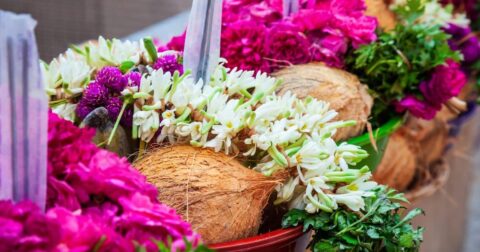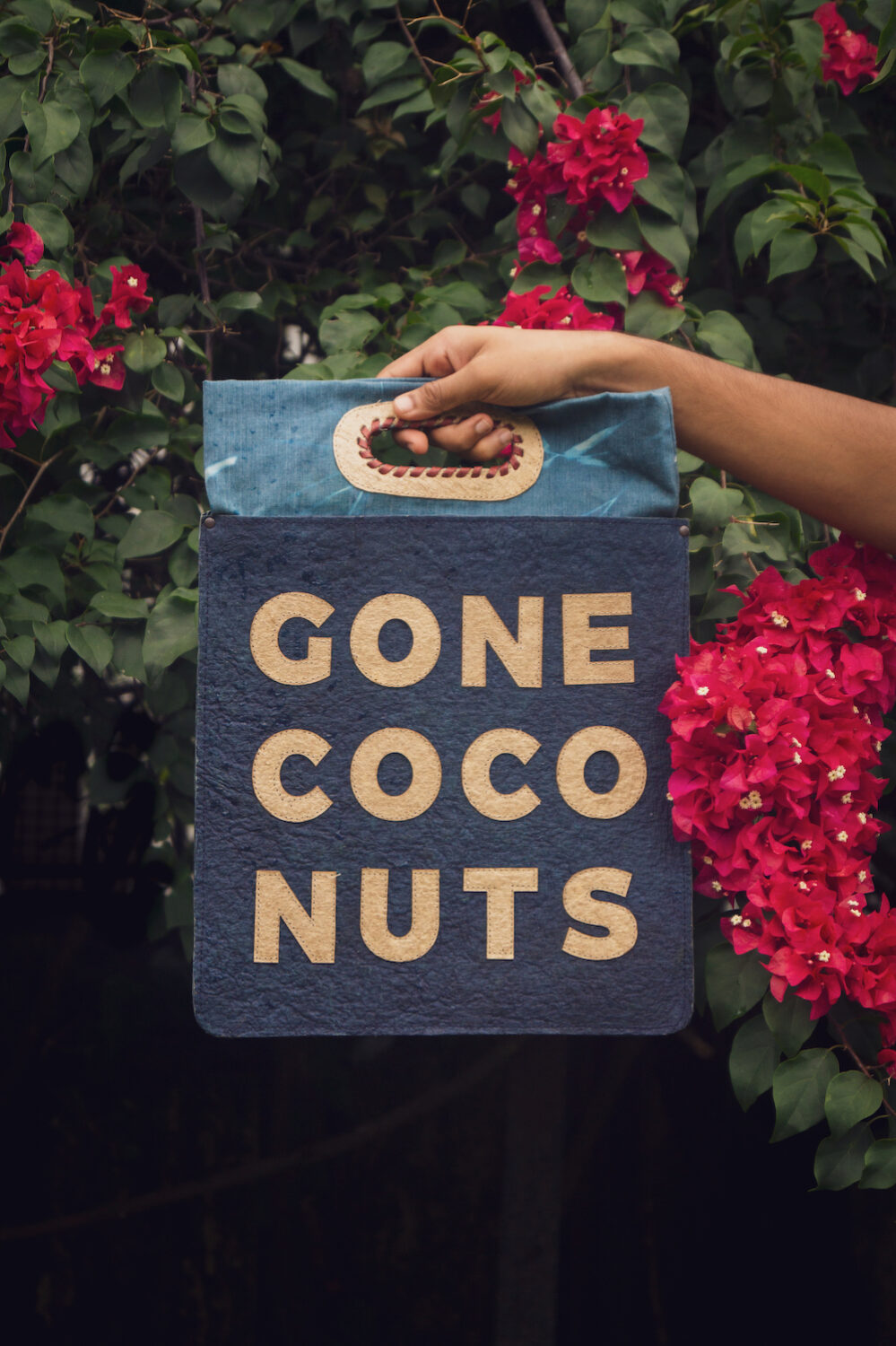Solutions
Chipotle’s Founder Is Betting on Plant-Forward Food
Food•2 min read
Reported
An intrepid group of entrepreneurs and researchers in India are taking wasted materials and turning them into vegan leather.

Reported • Food • Food Waste

Words by Arundhati Nath
“One day, by luck I saw a fibrous material growing out of one of the unused piles of flowers,” Ankit Agarwal tells Sentient Media. Agarwal is the co-founder of Phool, a startup based in Kanpur, India that in 2017 set out to repurpose a huge source of waste in the country: discarded temple flowers. “This material seemed to have a strange morphology, which intrigued me,” says Agarwal, whose company is now turning the floral waste into an alternative to animal leather.
Animal hides are big business in India. Between 2021 and 2022, the country exported leather products worth $4.87 billion, primarily to Europe and the U.S., and the industry is hoping to expand to $10 billion in the next three years. Though still held out by the fashion industry as a luxury material, leather is a co-product of the meat industry, and it comes with many environmental downsides. A leather jacket has a climate cost of 176 kilograms of CO2, for instance, and manufacturers also dump toxic chemical compounds like lead, arsenic, cadmium and chromium into the water as the leather is processed, on top of the millions of goats and other animals slaughtered each year in India for leather.
In the past five years or so, a handful of innovative Indian social entrepreneurs have begun working on cruelty-free, biodegradable leather alternatives. These enterprises are transforming organic waste like leftover coconut water, discarded flowers from temples, cork, leftovers from banana plantations, and even spent pineapple leaf to create vegan leather. Banofi Leather, A Big Indian Story, Malai Eco, Phool and Aulive are just a few of the Indian brands that have come up with technologies to create sustainable alternatives to animal leather.
In the South Indian state of Kerala, Malai Eco manufactures a leather-like material from the water of mature coconuts. When Zuzana Gombosova, co-founder of Malai Eco, first came to the country in 2015, she noticed there were many coconut plantations, but the leftover water was all going to waste, often dumped in landfills or waterways by the coconut processing units, which pollutes streams and rivers. “Coconut water is a biological waste and when it starts fermenting it acidifies the soil, making it infertile eventually,” she says.

Gombosova studied future textiles at the University of the Arts in London, where she learned that the wastewater could be fermented with a type of bacteria and transformed into something new. Together with her co-founder, the company devised a way to ferment coconut water and turn it into a material that has a leather-like feel.
The process works like this: the company collects the coconut water into vats, then sterilizes it before adding a natural bacterial culture. After about two weeks, the combination of the nutrient-rich water and the bacteria forms a jelly-like material, which can be mixed with natural fibers, gums, resins and oils to produce the material called Malai, a Hindi word that refers to milk cream or here, coconut pulp. The company creates bags, wallets and backpacks with the Malai, but also using natural fibers like banana, hemp and sisal.
In the eastern Indian city of Kolkata, Yale University postgraduate Jinali Mody started Banofi Leather earlier this year. Banofi creates vegan leather material from banana crop waste, sourcing the materials directly from thirty smallholder farmers across the city.

“After collecting the waste, we extract the fiber from them and make a pulp from it. The remainder of the banana stem, which is the non-fibrous part, is also treated with a certain alkali to create a different pulp-like material,” Mody says. Made from 60 percent banana crop waste, Banofi’s banana leather also relies on natural additives like starch, rubber, tree sap and leaves, as well as 20 percent synthetic dyes and antifungals.
Finally, there is also Phool. Using a type of bacteria and fungi to feed upon waste flowers, Phool manufactures the waste into a material the company calls Fleather — leather from flowers, essentially. “We’ve been able to do certain gene modification in these bacteria and give them the right kind of environment to help them grow,” Agarwal says. Phool is producing around 1,200 square feet of this material daily, and supplying Fleather to two fashion brands.
Although innovative, mostly natural and cruelty-free, transforming these organic ingredients into a strong, stretchy leather certainly comes with challenges.
First, as plant-based leather substitutes in India are relatively new, there’s little information available about how long these materials take to break down in landfill. But India’s Central Leather Research Institute has recently established a biodegradability test, which should help guide leather alternative companies in their bid to become more sustainable.
And to be clear, traditional leather can take many years to break down — anywhere from 50 years to as much as a thousand.
Still, traditional leather offers some features that have been tough to match. Creating enough stretch to use these materials to make shoes has proven difficult, says C. Anandharamakrishnan, who directs CSIR-NIIST, a scientific research agency in Thiruvananthapuram for the Indian government. Dead cells are malleable, he points out, and most natural materials can’t quite match that feature. “We can’t use these materials for shoes but they can be used for bags and chappals, or slippers.” Researchers are working on the challenges — “we are adding rubber latex to increase the strength,” he says, but for now, “we can’t replace animal skin” and get that same level of stretch from organic waste.
Working with natural fibers can be inconsistent too, which isn’t so desirable for a fashion manufacturer. “Keeping our products to the exact same color, quality, shape or texture is difficult,” Gombosova says. On top of this, companies that use fermentation, like Phool, have to be especially careful to avoid contamination.
Banofi Leather started out with a goal of producing 100 percent bio-based material but has added some synthetic ingredients for strength and consistency. Still, Banofi’s Mody is aiming for an all-natural version: “By March next year our goal is to make our product 100 percent bio-based.”
Despite the challenges, Indian entrepreneurs and scientists continue to test a wide range of materials for the leather alternatives industry — including waste from mango and papaya farms, rice straw, cactus and water hyacinth.
“Being a small start up, people generally don’t believe that this is possible,” says the Fleather manufacturer, Agarwal. “We had to fight a lot of disbelief.”